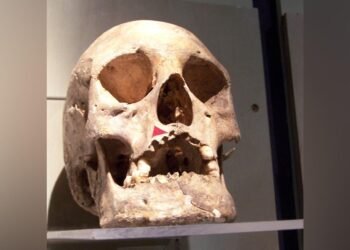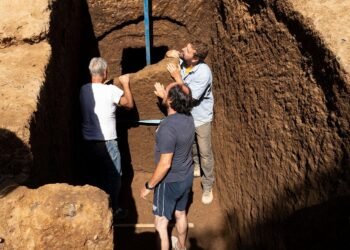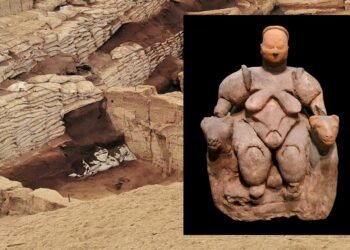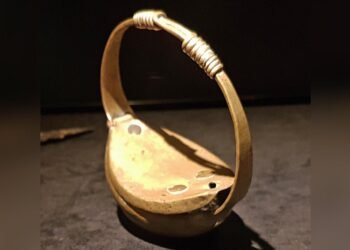Archaeologists have made a groundbreaking find at La Peña del Castro, an Iron Age settlement in La Ercina, León. They’ve unearthed one of the oldest known examples of writing in the region. A team from the University of León identified a Celtiberian alphabet inscription on a spindle whorl, a tool for textile production. This discovery, dating to the 1st century BCE, sheds new light on writing practices in the Iberian Peninsula before the Roman conquest.

The team uncovered the spindle whorl in 2017. It’s made of talc, a locally sourced material. This suggests the object was produced on-site, indicating that the settlement may have had residents capable of creating and understanding written symbols. They found the object in a storage area next to other items like a basket of seeds, cured beef, and various tools. These findings point to the community’s complex economic and social activities.
The symbols carved into the spindle whorl form a sharp angle similar to those seen in other Celtiberian and Vaccean settlements. Experts suggest this inscription might represent a property mark, which was common in nearby cultures during the period of growing social differentiation. But the unique context of the find, along with its careful carving, suggests it might also have had symbolic meaning or indicated the status of its owner.
This find stands out not just because of its rarity, but also because researchers previously thought writing in the northern Iberian Peninsula during the Iron Age was almost nonexistent. Before the Roman conquest, Iron Age cultures in this area, including those in the Cantabrian Mountains, didn’t leave behind any written records. This discovery challenges that idea and adds to the growing body of evidence suggesting that some communities could read and write, or at least had a basic form of writing long before Roman influence.

The inscription stands as one of the earliest examples of alphabetic writing found in the León province. It is part of a broader trend of increasing cultural and social complexity observed at La Peña del Castro. Excavations at the site from 2013 to 2019 uncovered a community characterized by population growth, economic surplus, and enhanced trade interactions. This inscription highlights the site’s evolving social structure, where writing might have served to show ownership or played a part in social rituals.
This finding is crucial as it suggests that foreign populations or cultural exchanges might have played a role in spreading writing traditions in the region. While there’s no definitive evidence connecting the people of La Peña del Castro to the Vaccean or other nearby groups, the inscription’s style suggests a cultural connection.
Published in the journal Paleohispánica, this research adds a fresh perspective to our knowledge of pre-Roman writing in Spain. Researchers hope that ongoing excavations and research will provide more context and evidence to reveal the social, political, and economic transformations that took place in this area during the Iron Age.
























Comments 0